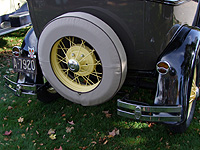
1920 was the first year that license plates were produced in the Connecticut prison system. These plates were embossed steel, and the length of the plate varied with the number of digits. A letter prefix came into use in 1924, to keep the length of the plates down. The letter can be used to determine where in the state the plate was likely issued from. From 1926 through 1931, the only major variation in the design of the plates was the annual change in colors.
In 1932, smaller 6 x 9-1/4 plates came into use. Every passenger car plate was now the same size. Two stacked prefix letters followed by one to three numbers was now the standard format. Older all-numeric plates with one to four numbers, and those with single letters followed by one to three numbers were continued on these new plates. Colors changed every year through 1936. The top letter continued to indicate where in the state the plate was issued.
In 1937, motorists received new ‘permanent’ plates. The plates were made of a thick aluminum with black paint on the embossed areas. These were the same size and numbering format as the prior year’s plates, but had a space in the bottom center where a replaceable date tab indicating the year of validity was inserted. This date tab indicated the last 2 digits of the year of use, and the colors of this tab changed every year. The tabs were made of a thin, brittle metal, so that the mounting ears would break off if the tab was removed from the plate for reuse elsewhere. This plate was used for 10 years, through 1947.
 1930
1930
 1931
1931
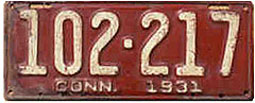 1931 was the last year for these long plates.
1931 was the last year for these long plates.
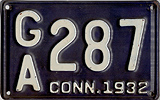 1932
1932
 1933
1933
The ‘P’ in the prefix indicates
it was issued from the Hartford DMV Office.
 1934
1934
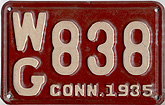 1935
1935
 This is an optional plate which was available to be displayed on the front of the vehicle for the year.
This is an optional plate which was available to be displayed on the front of the vehicle for the year.
 1936
1936
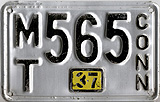 1937
1937
New ‘Permanent’ aluminum base with replaceable renewal tabs.
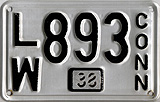 1938
1938
 1939
1939